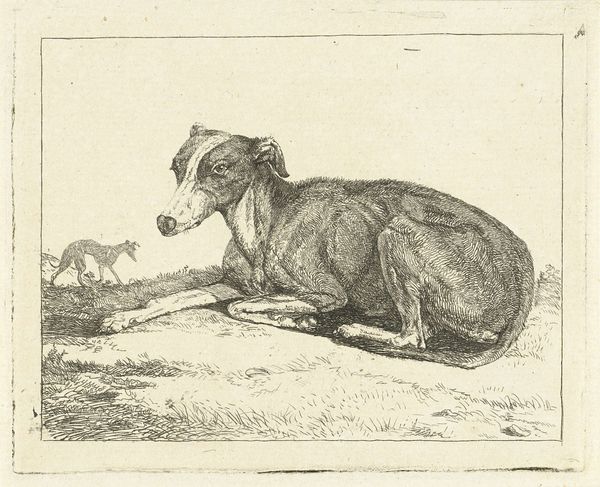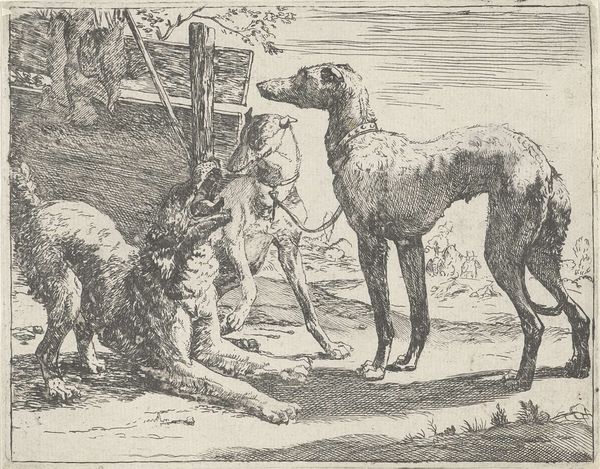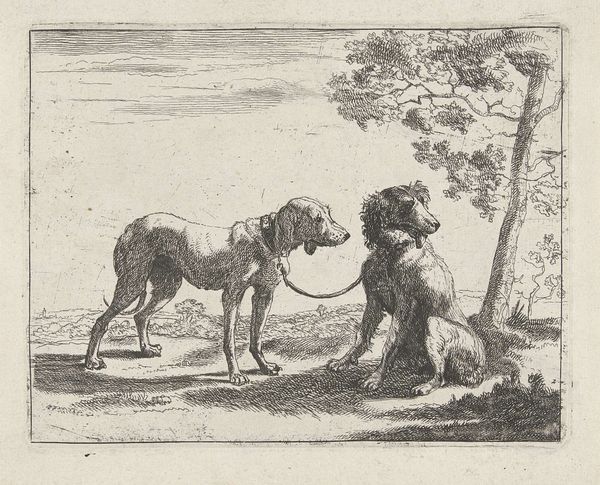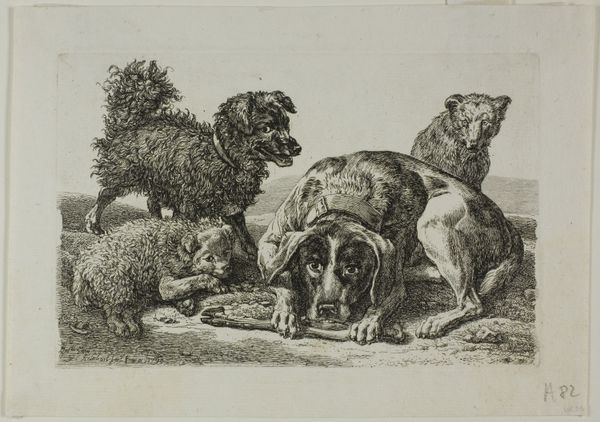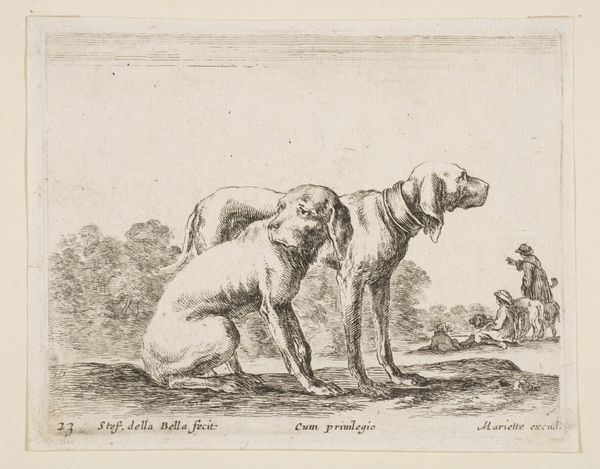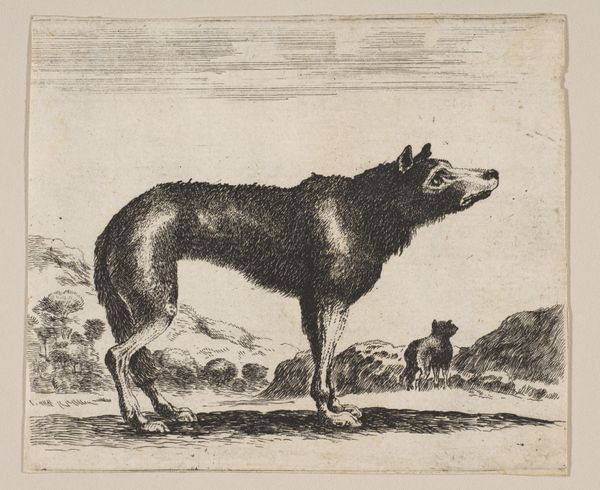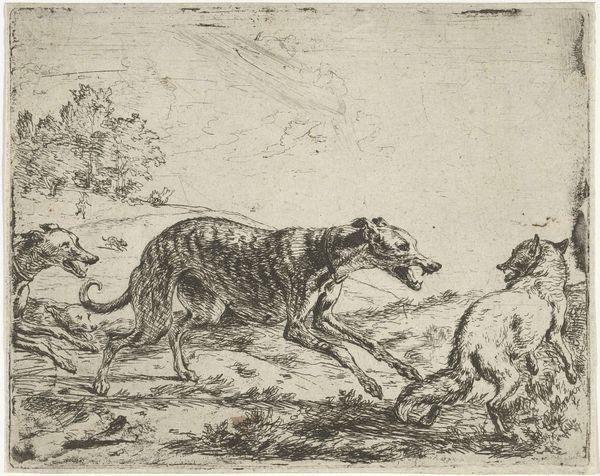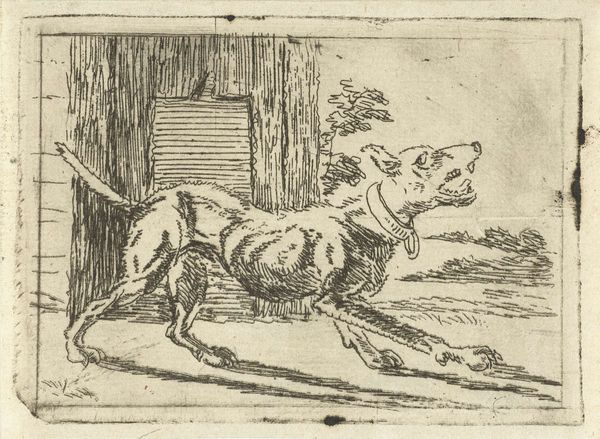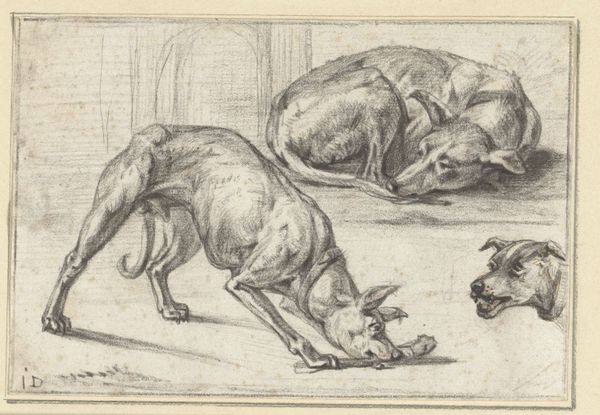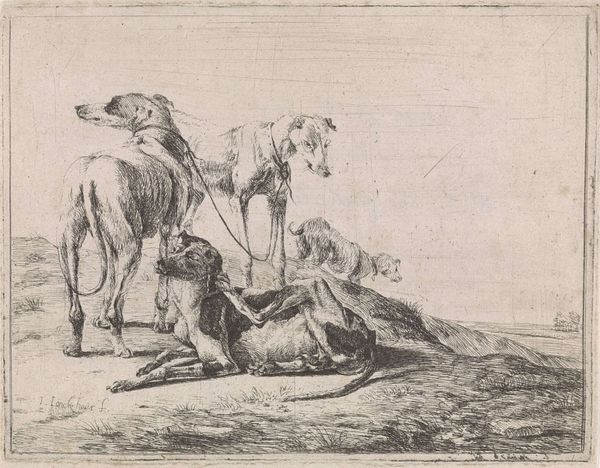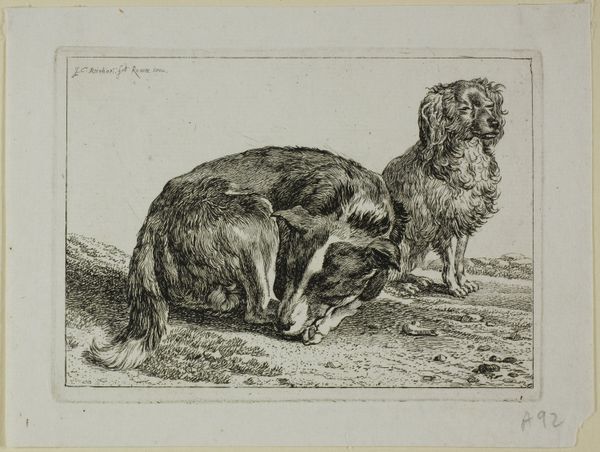
print, etching
#
baroque
#
animal
#
dutch-golden-age
# print
#
etching
#
landscape
#
line
#
realism
Dimensions: height 132 mm, width 146 mm
Copyright: Rijks Museum: Open Domain
Simon de Vlieger made this print, "Hazewindhond en jachthond," around the mid-17th century, using etching. Etching involves coating a metal plate with wax, scratching an image into it, and then bathing the plate in acid, which bites into the exposed metal, leaving an impression that can then be inked and printed. De Vlieger’s skill with the medium is clear; look at the fineness of the lines, used to evoke the dogs' fur and musculature. The thinness of the lines create a sense of texture which invites you to imagine the quality of the dogs' coats. The choice of etching speaks to a broader culture of printmaking in the 17th century, where artists engaged in the skilled traditions of production. Prints like this one were part of a growing market for images, and thus linked to early capitalism and consumption. And while de Vlieger was certainly a skilled artist, his printmaking practice involved labor, politics, and the demands of a commercial market. So by considering the materiality and means of production, we can understand more fully the cultural and economic context of this print, and its place in a longer history of art and craft.
Comments
No comments
Be the first to comment and join the conversation on the ultimate creative platform.
